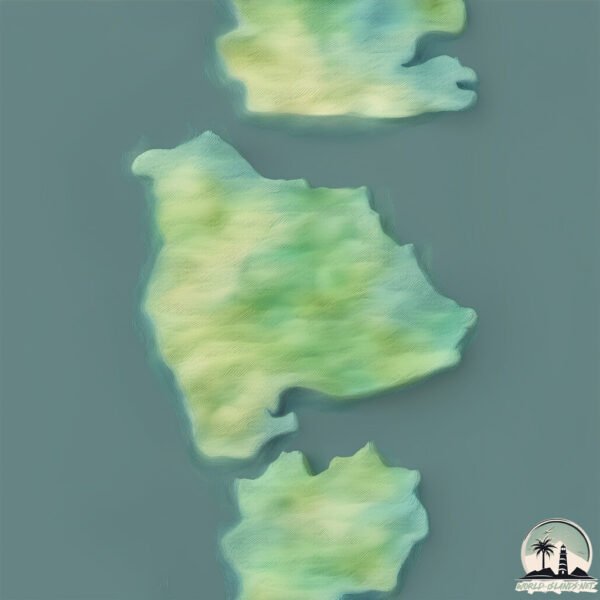Welcome to Christie Island , a Continental island in the Hudson Bay, part of the majestic Arctic Ocean. This guide offers a comprehensive overview of what makes Christie Island unique – from its geography and climate to its population, infrastructure, and beyond. Dive into the details:
Geography and size of Christie Island
Size: 19.4 km²Coastline: 26.4 kmOcean: Arctic OceanSea: Hudson BayContinent: North America
Christie Island is a Medium Island spanning 19 km² with a coastline of 26 km.
Archipel: –
Tectonic Plate: North America – Covers North America and parts of the Atlantic and Arctic Oceans, characterized by diverse geological features and varying levels of seismic activity.
The geographic heart of the island is pinpointed at these coordinates:
Climate and weather of Christie Island
Climate Zone: ContinentalClimate Details: Dry-Summer Subarctic ClimateTemperature: Cold Summer
Climate Characteristics: Short, mild summers with significantly less moisture, and prolonged cold periods. Found in northern, inland regions.
Topography and nature of Christie Island
Timezone: UTC-05:00Timezone places: America/New_YorkMax. Elevation: 69 m Mean Elevation: 30 mVegetation: Herbaceous CoverTree Coverage: 10%
The mean elevation is 30 m. The highest elevation on the island reaches approximately 69 meters above sea level. The island is characterized by Plains: Flat, low-lying lands characterized by a maximum elevation of up to 200 meters. On islands, plains are typically coastal lowlands or central flat areas.
Dominating Vegetation: Herbaceous Cover
Vegetation: 6 vegetation zones – Very Highly Diverse Island
Infrastructure and Travelling to Christie Island
Does the island have a public airport? no .
Does the island have a major port? no .
The mean population of Christie Island is 0 per km². Christie Island is Uninhabited. The island belongs to Canada .
Continuing your journey, Davieau Island is the next notable island, situated merely km away.
Island In The Sun - Tony Christie (1975)
Island In The Sun - Tony Christie (1975)
Island in the Sun (Tony Christie)
Eiland in de Zon, door de Britse zanger Tony Christie,(Antony- ...
Eiland in de Zon, door de Britse zanger Tony Christie,(Antony- Fitzgerald, Geb, !943, Conisborough, Sucsesvol in de jare 60 - 70.
Following Agatha Christie's footsteps at Burgh Island Hotel - South Devon, UK
It's here, at Burgh Island Hotel, open since 1929, where Agatha ...
It's here, at Burgh Island Hotel, open since 1929, where Agatha Christie has been setting the scenes of her crimes during her ...
Canada is classified as Developed region: G7: Group of Seven – Major advanced economies, including Canada, France, Germany, Italy, Japan, the United Kingdom, and the United States. The level of income is High income: OECD.
News – Latest Updates and Headlines from Christie Island
Stay informed with the most recent news and important headlines from Christie Island. Here’s a roundup of the latest developments.
Loading...
Please note: The data used here has been primarily extracted from satellite readings. Deviations from exact values may occur, particularly regarding the height of elevations and population density. Land area and coastline measurements refer to average values at mean high tide.

